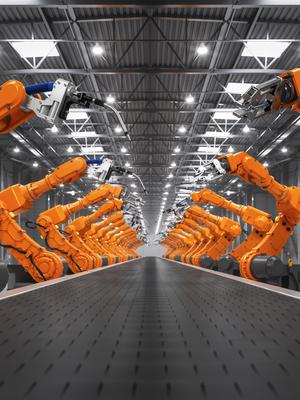Unreliable mobile coverage poses serious operational and safety concerns in Smart Construction and Industry 4.0
by Gearoid Collins, CCO, Professional and Cloud Services
Gearoid Collins
November 24, 2021
For an industry that accounts for 6% GDP worldwide, construction players have been slower than most to embrace IoT. However, the rising impact of construction technologies has opened new doors for digital transformation across the sector and is changing the face of the industry. As such demand for embedded tech, automated access control, CCTV, self-guiding vehicles, connected conveyor systems and a wealth of intelligent machines capable of performing complex tasks independent of human involvement is at an all-time high.
No longer limited to sci-fi, these autonomous technologies have already shown their true worth in industry and manufacturing. The construction industry is also rapidly realising the power of automation as researchers continue to explore how interconnected machines can be used to cost effectively overcome complex structural engineering challenges. What’s more, their usage is set to accelerate in the aftermath of the pandemic and the ongoing consequences of Brexit which have resulted in a much-diminished workforce. Construction robots can significantly speed up repetitive building tasks, increase efficiency through side-by-side deployment with real-world people and dramatically reduce the risk of injury when working at height.
— Gearoid Collins
Chief Commercial Officer, Professional and Cloud Services
If Covid-19 and Brexit weren’t enough to contend with, the industry is also experiencing global supply chain issues, and as such construction firms are under heightened pressure to work smarter by making greater use of cloud-based technologies like building information models (BIM) and connected site software platforms for greater visibility and insight. Digitised processes and applications are needed, not only to keep costs down and to reduce unnecessary close contact in confined spaces, but to futureproof the industry against other major upheavals or unforeseen scenarios.
From construction sites to production lines
Not only are construction companies having to come to terms with new working practices post-pandemic, prefabricated building modules and 3D printing are driving change in the industry by transforming building sites heavily reliant on a manual labour force into fast paced production lines powered by IoT.
However, whilst IoT and automation is accelerating the assembly of these modular buildings, the construction robots, in some instances, are proving to be counterproductive. This is because of their “more haste less speed tactics”, which can pose safety concerns for the construction industry. State of the art assembly lines controlled by inexhaustible machines are driving up fulfilment targets, with labourers struggling to source the required brackets/parts/subframes in time with such slick operations. If these Smart production lines are to operate in accordance with current standards, the associated maintenance and damage detection processes must also be automated to ensure the smooth running of the interconnected machinery to minimise risk and maintain a safe working environment.
The larger the site, the more important this becomes. Large inner-city projects comprise an abundance of cutting-edge machinery such as AGVs (automated guided vehicle systems) drones or automated scaffolding systems. If said scaffolding were to be pushed out of line, causing a machine failure, structural collapse or injury, the cost in lost time or equipment damage would be catastrophic but the potential for large compensation claims is enormous.
Mobile coverage is integral to construction site safety
Apart from causing a commercial inconvenience and posing serious health and safety concerns, lack of a mobile signal source is detrimental to M2M communications. The obligatory maintenance and support systems pivotal to sustained equipment and staff safety in smart construction setups are unable to trigger an incident without mobile coverage because the service used is SMS. Mobile connectivity is used because it’s readily accessible, it's cheap, and, with encryption, it's secure.
Ensuring reliable coverage is no mean feat
With all these considerations to take care of, the deployed comms infrastructures must be able to support existing devices and services. More so, they must support high performance low latency connectivity needed for IoT and automation to facilitate interconnectivity and assure people and machine safety in construction. This must be achieved cost effectively and with minimal disruption to the project. Private and robust mobile coverage, capable of supporting thousands of devices and applications simultaneously, is needed and that’s where Boldyn Networks comes in.
Future-ready solution available today
Built from the ground up to meet the demands of demanding IoT environments, our private mobile network combines the reliability of always-on IT systems with cutting edge technological advances in the field of Open Radio Access Networks (O-RAN) and Core Network Function Virtualization to provide 24x7 connectivity requirements needed for smart construction.
As smart technologies go mainstream, 5G is poised to become the underpinning enabler to digitization and IoT. The wide scale rollout of this next generation network is still a long way off due to the infrastructure overhauls needed at carrier level to support cloud computing and data backhaul. In the meantime, the health and safety systems operating alongside smart machines in construction still need a reliable trigger mechanism. For the foreseeable future, this will continue to be cellular.

